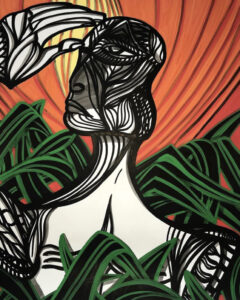Bouncing Back from Rejection
A Strange Note in Motsi*
Sometime in 2020, the brilliant workplace psychologist, Adam Grant, published a podcast conversation with Sarah Robb O’Hagan (entrepreneur), Emily Winter (comedy writer), M. Night Shyamalan (filmmaker), Blake Ashforth (expert on identity at Arizona University). This note is about their conversation, a timely and profound discourse for anyone who has ever been rejected by someone or a group of people.
Who is to Blame?
When we get hurt by failure, we’re naturally inclined to blame something or someone other than ourselves. Blaming others is an easy get-away from the stretch of responsibility. On the flip side, we’re told by our social cultures to keep off blaming others for our actions; to wear our actions on our arm and ‘take responsibility’; to expect nothing of others. This seemingly sagacious warning has been a piece of cross-generational music that is often resounded without a clear explanation.
So here’s the problem: while this act of blaming others for our actions might have a negative connotation attached to it, putting the blame on ourselves (alone) isn’t any healthier. Blaming others initiates resentment, but simply blaming one’s self brings about self-distrust in our abilities.
In his interview with Sarah, Adam explores the question of ‘who’s to blame?’ He goes on to offer a valuable approach to bouncing back from rejection.
‘When something goes wrong,’ Grant says ‘the big question is: who’s at fault? For a long time, psychologists only studied two kinds of explanations: blaming others and blaming ourselves. You heard Sarah do both at Virgin [Atlantic]. And then, blame herself again at Atari. In some situations, those reactions may be totally appropriate. Yet, blaming ourselves often makes us weaker. It leaves our confidence shattered. Blaming others makes us weaker, too. It prevents us from learning from our own mistakes. Recently, researchers have discovered that there’s a third option. Most of the time, when you get rejected, the main reason is not you, it’s not me, it’s us.’
Blame ‘us’. This approach opens our mind to understanding how our misfortune was influenced by both ourselves and others. It allows us to identify the fault lines and take responsibility for our role in an unfortunate outcome. Responsibility is self-forgiveness around an understanding of our shortcomings, and the action we take to bridge the gap between an existing negative emotional effect and future actions.

Found your other self?
Failure often creates a feeling of rejection, which hurts our identity. The interesting thing, though, is that we all have over a single identity and when our creative work on a particular identity is shamed, it helps to know that we can always switch to a different identity by creating something different from what we’re accustomed to or shifting to a different audience group where our work is better impactful and accepted. This knowledge of multiple identities also helps us bring our art to life in places we find rather draining. In simple words, it fuels adaptability. In the fine words of Blake Ashforth;
‘The good thing is that we all live multiple lives, right? So I’m a husband, an Arizonan, a hockey lover, a professor. And so we have enough of these identities that you can move your cognitive eggs around to whatever basket needs it at the moment.’
Becoming the best version of yourself requires you to continuously edit your beliefs, and to upgrade and expand your identity. —James Clear

Looking for Failure
On dealing with rejection as a comedy writer, Emily Winter shares an approach that’s quite opposite to what we’re taught. She set out on a deliberate quest for rejection.
‘I was just like, I have to create opportunities for myself.’ Emily tells Grant. ‘Trying to get rejected 100 times was scary and empowering. Like, I was sort of excited going into the year, because I kind of felt invincible, because it really does reframe things as a win-win. Obviously, rejection is an asset when you’re aiming for 100 rejections. That’s a win, it goes on the list of rejections. So I made it my New Year’s resolution for 2018. In the end, I ended up with 107 rejections and 43 acceptances.’
The key thing here is being deliberate about getting rejected. Starting a rejection pathway by deliberately seeking it out when applying for opportunities (could be a job, school, fellowships, competitions, and more) prepares our mind for pain and our response to its unexpected ache in the future. This mentality strengthens our ability to persist under tough weathers.
1 Question for You
Does the fear of failure truly exist?
As you think through this question, here’s what you should do next: listen to the brilliant conversation between Adam and his guests by tuning into this episode on bouncing back from rejection.
*Motsi is the Shona word for the letter, one — which, in this case, represents the first month of the year. It is spoken by 10.7 million people as a first language and by another 1.8 million people as a second or third language in Zimbabwe, Botswana, Malawi, and Zambia (Ethnologue).
 @etashelinto
@etashelinto